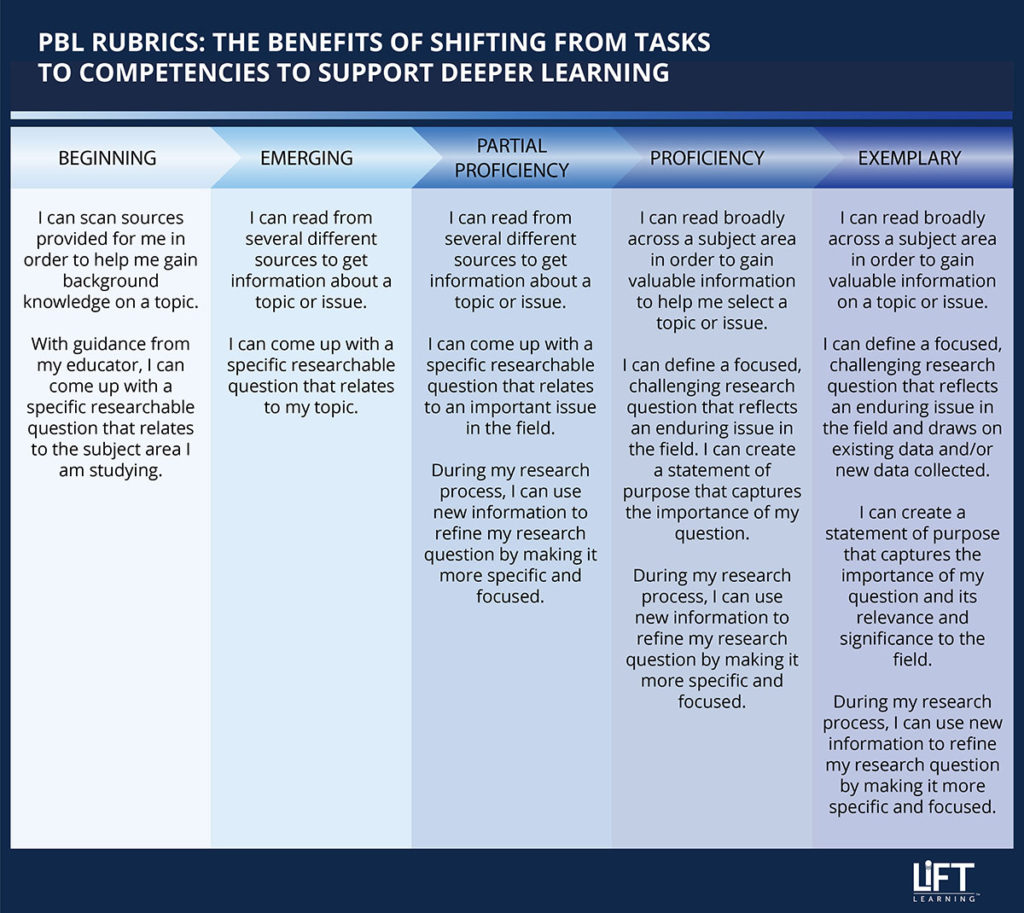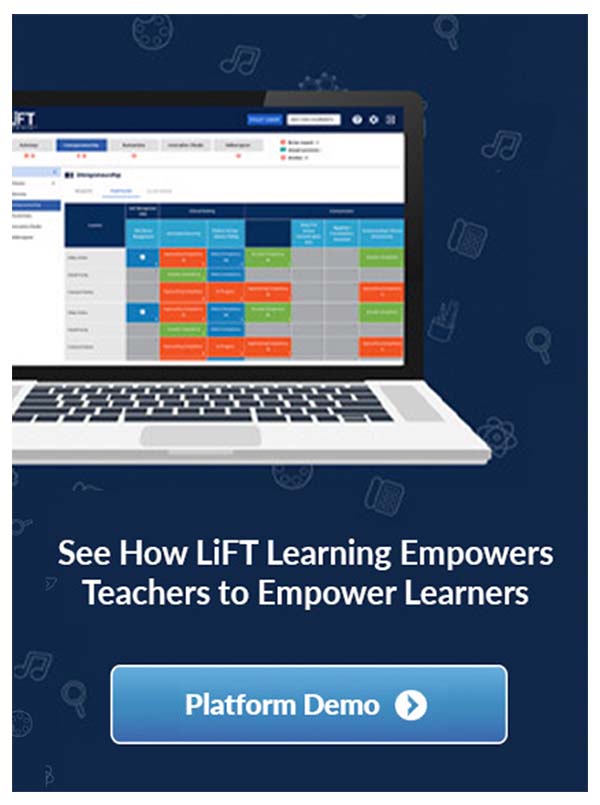PBL & CBE Rubrics: What You Need To Know

The creation of frameworks for planning, executing, and evaluating learning outcomes is a necessary part of the educational process.
One of the more common ways to set and assess expectations is through the use of a rubric.
Rubrics are tools that help guide learners through a task, skill, or project and assist in assessing their progress and learning. They can also promote learner self-reflection since rubrics can reveal skills or practices that need development. Educators create rubrics to assess and guide tasks, evaluate competencies and help understand the learning progress of projects.
But what type of rubric is the most effective way to assess student learning without guiding every step of the process?
Let’s take a look at what differentiates project-based learning (PBL) rubrics from Competency-Based Education (CBE) rubrics and how to best utilize them to increase learning in the classroom.
Rubrics: Who are they For?
Rubrics are a structured way for educators to express the expectations for the demonstration of learning, and how their teachers will gauge how deeply the information was understood.
Rubrics provide a framework for teachers to plan and explain, sometimes in great detail through “I can” statements, these expectations for the lessons and learning outcomes.
But rubrics are just as useful for the learners as for the teachers.
Students can find out before instruction begins exactly what the expectations for the lesson or activities will be, what they will learn, how learning or activities will occur and what the learning outcome expectations for mastery will be.
This comprehensive approach benefits students because they can take some ownership of their own learning by knowing when they are meeting or exceeding rubric expectations.
Students can also learn ahead of time when their actions or outcomes will fall below expectations, giving them the opportunity to see what they need to do to meet or master learning expectations in their learning journeys.
Students often feel lost in school because they are not exposed to the “big picture” of the content that they are expected to master but rubrics provide a window into this deeper understanding and can be reassuring to students while not overwhelming them with too much information.
Task vs Competency Rubrics
Rubrics are generally designed to measure either task completion or they are set up to guide and measure competencies or skills.
Task Rubrics
- Measure single or groupings of activities
- Define mastery of the task
- May include detailed steps to complete the task
- Ties task completion to concept mastery
Competency Rubrics
- Measure single or groupings of skills or content areas
- Define mastery of the competency with differentiated levels of comprehension (below standard, approaching standard, at standard, above standard)
- Includes definitions of performance measures
- Equates comprehension with concept mastery
What Differentiates PBL Rubrics?
Within the general concept of task rubrics, is the idea that completing specific actions leads to concept mastery. But Project Based Learning does not rely solely on task completion to reach learning outcomes so using task rubrics to measure mastery in the PBL classroom does not give educators or students an accurate picture.
Instead, PBL rubrics are the best way to guide instruction, learning, and mastery in classrooms utilizing PBL. So what makes PBL rubrics different from task rubrics or even competency-based rubrics?
- They Are a Learning Process Guide
Since the PBL classroom involves students working together to understand a complex problem, students will undertake multiple tasks along the way to their discovery and understanding. PBL rubrics provide a roadmap for students to take or explore in their learning journeys rather than simply laying out the exact steps a student will take during the project.
- They Define Multiple Kinds of Standards Expectations
Similar to task and competency rubrics, a PBL rubric will contain standards and expectations for students so they can quantify their content mastery levels at all stages of the project as well as their presentation of the material during and after the project. Students will be able to gauge how well they are meeting or exceeding expectations in both the way they address and work on the project as well as how they present their findings or conclusions to the group.
- They Give Mid-Project Checkpoints
With the detailed nature of PBL rubrics, students can understand the pacing of the learning process through rubric checkpoints. Since the goals and expectations are clearly outlined ahead of time for the student, these milestones serve to encourage and affirm student work during the process.
- They May Provide Group and Self-Reflection Assessments
As part of the PBL rubric, often a group assessment is part of the expectation, and sometimes a self-reflection option is given as well. These inclusions encourage the collaborative nature of the PBL classroom and also encourage students to answer questions about what they are learning while engaging them in further inquiry towards their larger task.
- Multi-Rubric Projects are Possible
Students may experience more than one PBL rubric for a project they work on so that stages and steps of the process are evaluated as a feedback loop for students. Providing multiple rubrics allows teachers to provide detailed, timely feedback for students so they can do their best work and get the most out of the learning experience.
- They Act as a Summary Tool
Of course, the focus of most rubrics is to provide a summative evaluation for both the educator as well as the student. A PBL rubric provides ample opportunity for both to understand the level of mastery of the assessed standards as well as the tasks, collaboration, and presentation of the student-developed content. But unlike a simple “pass/fail” assessment, PBL rubrics provide a rich, detailed look at student effort, mastery, and understanding.
A PBL Rubric in Action
The use of rubrics focused on PBL classrooms also provides educators with documentation about student progress and outcomes, allowing teachers to support students in all stages of their learning journeys as well.
Students will learn what skills they will be learning and practicing, how they will be working together as well as what the goal of the project is before they begin. Teachers will be able to clearly define expectations to guide student learning and students will benefit from timely feedback to stay on track and to help them to take ownership of their own knowledge acquisition
The PBL classroom is best served by a rubric that accounts for the planning, expectations, process, and evaluation of student work for both the teacher and the learners. Students will discover what skills they will be learning and practicing, how they will be working together as well as what the goal of the project is before beginning.
Teachers will define expectations to guide student learning and students will benefit from timely feedback to stay on track and to help them to take ownership of their own knowledge acquisition. Putting PBL rubrics into action in the classroom will completely change the learning dynamic by empowering students to take charge of their learning journey.
To discover more about PBL Rubrics and how you can implement them in your classroom, contact us today or sign up for our newsletter to stay up to date with the latest PBL news!

